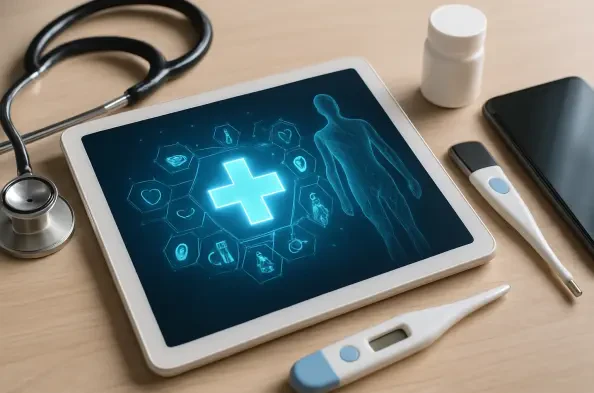In an era where digital security is paramount, the recent ransomware attack on Huron Regional Medical Center (HRMC) in Huron, South Dakota, serves as a chilling reminder of the vulnerabilities within healthcare systems, exposing critical flaws that cybercriminals exploit. Detected on May 31, this breach orchestrated by the BEAST ransomware group exposed a staggering 800GB of sensitive data, compromising the personal and medical information of countless individuals. The incident not only highlights the audacity of cybercriminals but also raises pressing questions about the safety of patient data in an increasingly connected world. As healthcare providers hold some of the most private details of a person’s life, the fallout from such an event can be devastating, affecting trust and security on multiple levels. This article delves into the specifics of the breach, its repercussions for those affected, and the broader implications for cybersecurity in the medical field, painting a comprehensive picture of a critical modern challenge.
Unveiling the Scope of the Incident
Details of the Cyberattack
The cyberattack on HRMC was a meticulously planned assault by the BEAST ransomware group, which gained unauthorized access to the medical center’s network, extracting a vast trove of data before their actions were detected. Publicized on the dark web on August 21, the breach involved the theft of highly sensitive information, including names, addresses, Social Security numbers, Medicare and Medicaid details, financial records, and intricate medical data like diagnoses and treatment histories. While the exact number of affected individuals remains undisclosed, the impact is known to span across regions, with at least 20 Montana residents confirmed to be among the victims. HRMC, with assistance from legal counsel and forensic experts, identified the scope of the breach and formally disclosed it on September 9, emphasizing the severity of the data exposure. This incident underscores the sophisticated tactics employed by cybercriminals, who often exploit vulnerabilities in systems that are not adequately fortified against such threats.
Immediate Consequences for Patient Data
The immediate aftermath of the HRMC breach left patients grappling with the reality that their most private information could now be in the hands of malicious actors. The range of exposed data poses significant risks of identity theft and financial fraud, as details like Social Security numbers and health insurance information are highly sought after on illicit markets. For many, the breach means a sudden and urgent need to monitor financial accounts and credit reports for suspicious activity, a task that can be both time-consuming and stressful. Beyond the tangible risks, there is also an intangible cost—the erosion of trust in healthcare providers to safeguard personal information. Patients may now hesitate to share critical health details, potentially impacting the quality of care they receive. HRMC’s confirmation of the incident, while necessary, has done little to immediately alleviate these concerns, as the scale of potential misuse of the stolen data remains a looming threat.
Addressing the Fallout and Future Safeguards
HRMC’s Response and Support Measures
In response to the breach, HRMC took swift steps to mitigate the damage by offering affected individuals complimentary credit monitoring services for 12 months through Cyberscout, a TransUnion company. Notifications were sent via mail with detailed instructions on how to enroll in these protective services, alongside access to a dedicated assistance line for further support. The medical center also advised patients to remain vigilant, suggesting they place fraud alerts or credit freezes with major credit bureaus and closely monitor their financial statements for any irregularities. These measures, while helpful, are largely reactive, addressing the breach after the fact rather than preventing it. The response highlights a critical gap in preemptive cybersecurity strategies that could shield such sensitive data from exposure in the first place. For those impacted, these offerings provide a starting point for protection, yet the burden of ongoing vigilance falls heavily on the individuals themselves.
Long-Term Implications for Cybersecurity in Healthcare
Looking beyond the immediate response, the HRMC breach serves as a stark wake-up call for the healthcare industry to bolster its defenses against the growing tide of ransomware attacks. Cybercriminals are increasingly targeting medical institutions due to the high value of personal and health data on black markets, a trend that shows no signs of slowing. This incident emphasizes the urgent need for robust cybersecurity frameworks, including advanced encryption, regular system updates, and comprehensive staff training to recognize phishing attempts and other threats. Additionally, collaboration between healthcare providers and cybersecurity experts could foster the development of more resilient systems. For patients, the lesson is clear: personal precaution, such as utilizing continuous monitoring tools, is vital in an era where data breaches are becoming commonplace. The shared responsibility between institutions and individuals must be acknowledged to create a safer digital environment.
Moving Forward with Enhanced Protections
Reflecting on the breach, it became evident that the incident at HRMC was a pivotal moment that exposed deep-seated vulnerabilities in healthcare data security. The actions taken post-breach, such as offering credit monitoring, were crucial first steps in supporting affected patients and rebuilding trust. However, the broader challenge was to shift from a reactive stance to a proactive one, ensuring that such breaches are prevented through stronger safeguards. Industry-wide efforts to implement stricter regulations and invest in cutting-edge security technologies were discussed as essential measures to protect sensitive information. Patients, too, were encouraged to take charge of their digital safety by adopting tools and practices that could detect and limit data misuse. Ultimately, the event underscored that safeguarding patient data was not just an institutional obligation but a collective endeavor, paving the way for future innovations and policies aimed at fortifying the healthcare sector against cyber threats.






